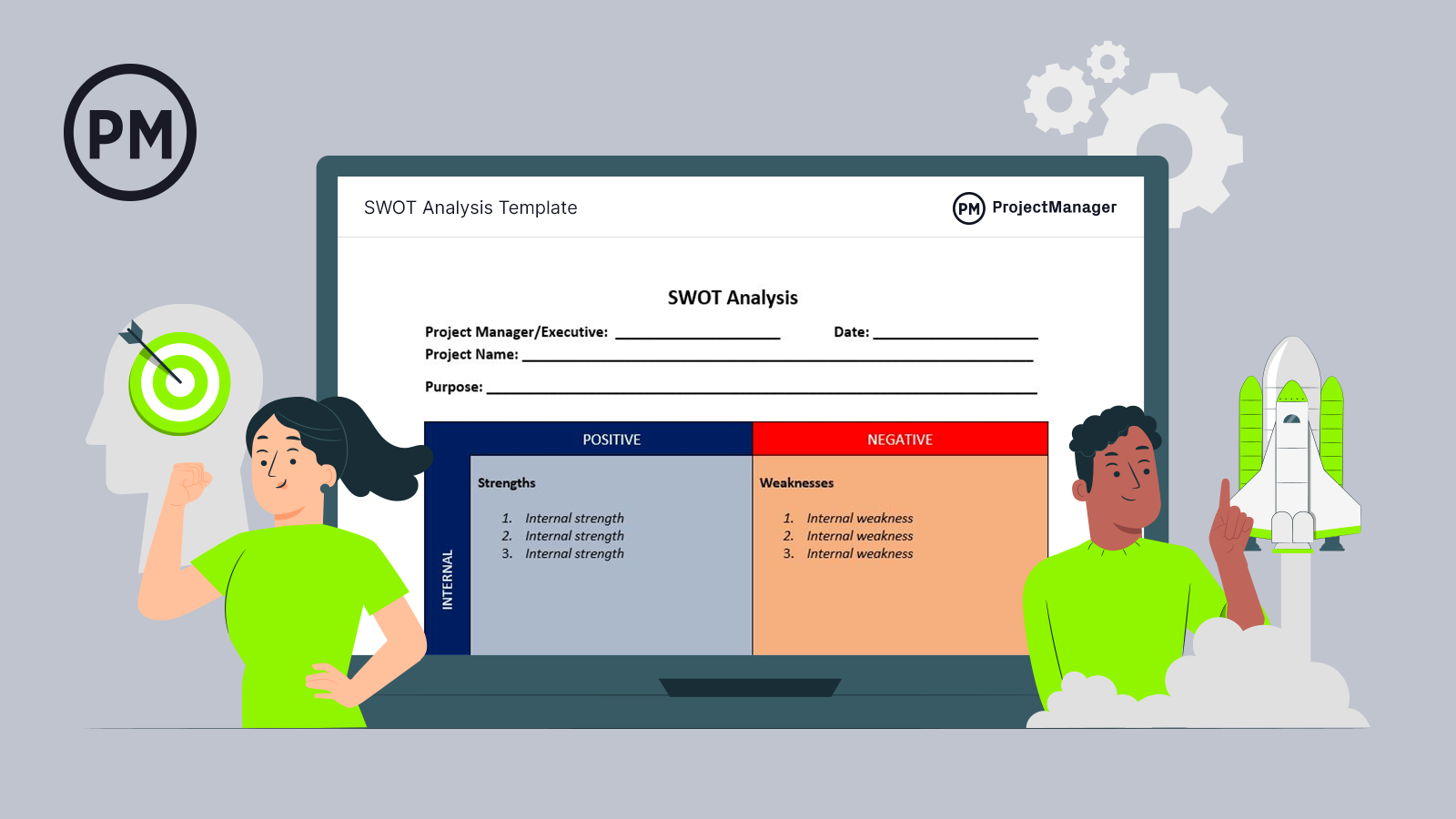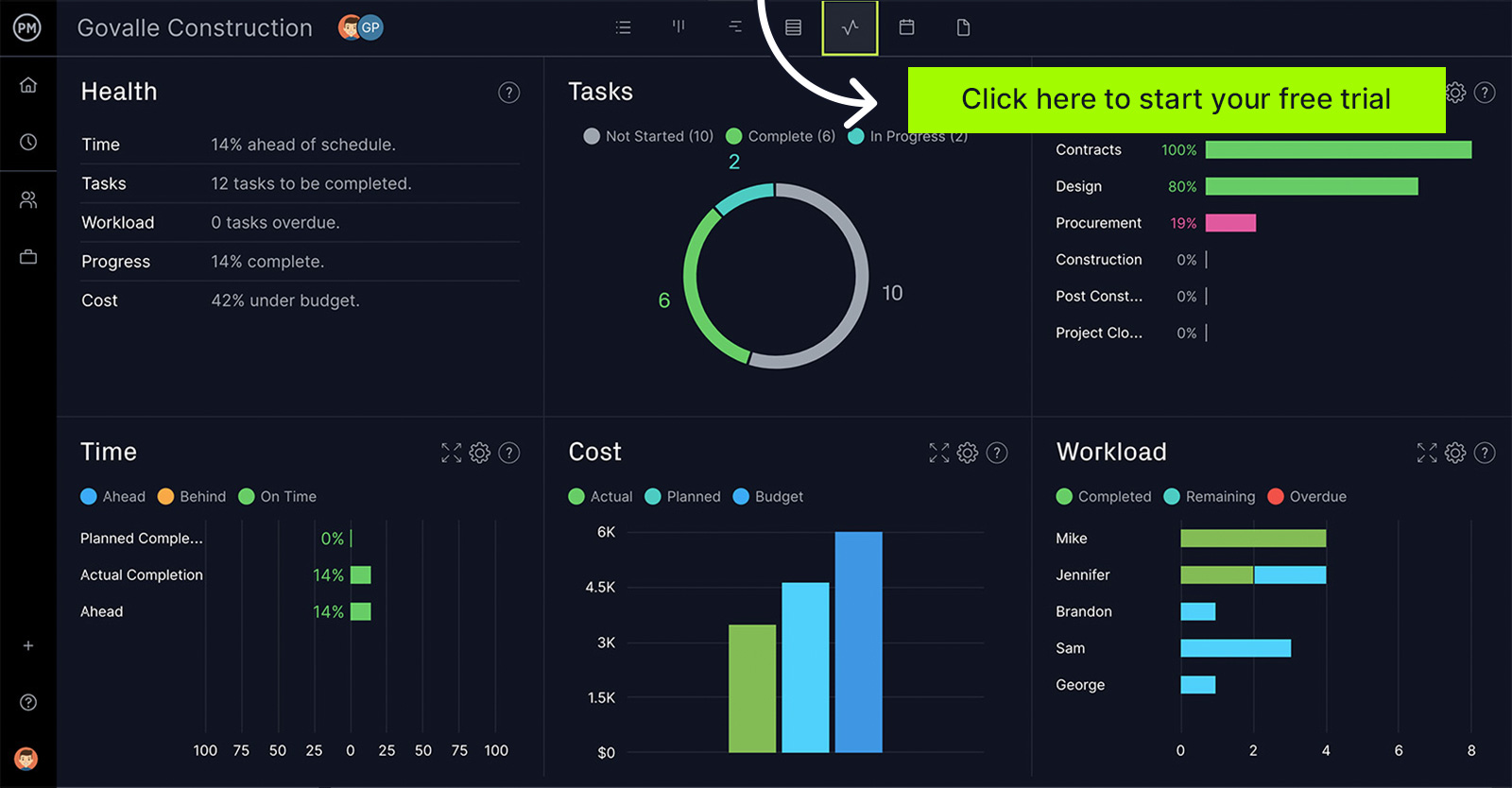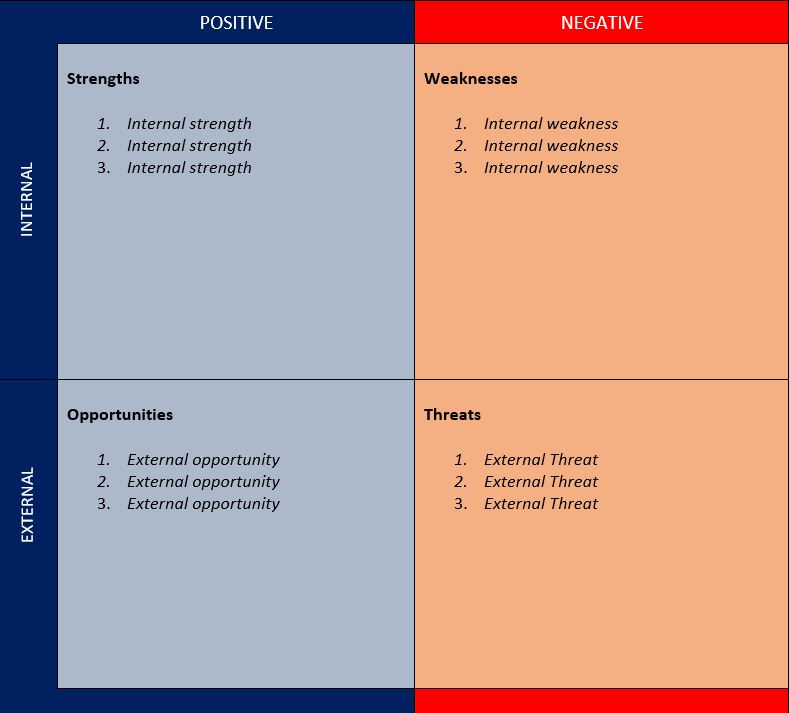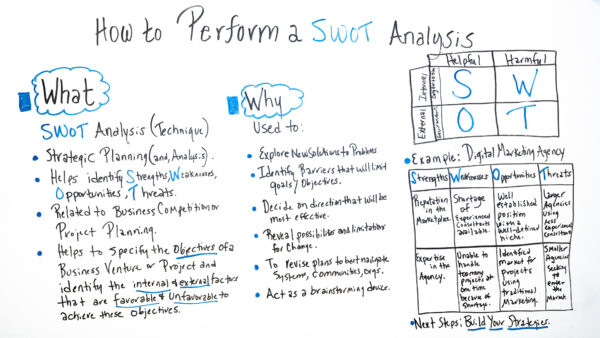What Is a SWOT Analysis?
A SWOT analysis is a technique that is used in strategic planning. It helps to identify the strengths, weaknesses, opportunities and threats of a business using a SWOT matrix. SWOT is also called a situational analysis in business planning because it captures the internal and external factors that make up the business environment of a company to provide an overview of its current state or current situation. In addition, a SWOT analysis helps to identify competitive advantages that your business or project plan might have and specify its objectives based on its strengths, weaknesses, opportunities and threats.

Get your free
SWOT Analysis Template
Use this free SWOT Analysis Template for Word to manage your projects better.
SWOT Acronym
SWOT stands for strengths, weaknesses, opportunities and threats. Here’s a quick explanation of how these four categories describe the environment of a project or business.
Strengths
Strengths are one of the two internal factors you’ll map out in your SWOT analysis. It speaks to where you have a competitive advantage in your project or organization.
Weaknesses
Weaknesses are the second half of your internal review. Here, you will look at where you’re falling short in your project or business planning.
Opportunities
Opportunities are the first half of your exploration of external factors impacting your business or project. Here, you’ll be looking for what in the business environment you can exploit to your advantage.
Threats
Threats are the second half of external factors in the business environment that can harm your project or organization.
The SWOT Matrix
A SWOT matrix is another way of saying SWOT analysis. The SWOT matrix is a term to describe the structure in which the SWOT analysis is reported. That is, the SWOT matrix is a box or shape that’s divided into four quadrants that represent strengths, weaknesses, opportunities and threats to the project or organization.
SWOT Analysis Example
Let’s look at a SWOT analysis in the real world to give us a better picture of what a SWOT analysis is and how it works. Let’s take a soda company that is well-established in the marketplace. Below is our SWOT analysis.
- Strengths: High brand recognition, the majority share of the market and a variety of products.
- Weaknesses: Going against health trends, unable to formulate a healthy version of its top-selling product.
- Opportunities: The health market is wide open for them.
- Threats: They are a late entry into the health market, which has already strong brand leaders, and their brand has an unhealthy image.
Considering the dominance of this product, the company should develop and market a health-conscious beverage sooner than later. It will help them to remove the tarnish to their brand and open up a huge potential for growth.
Why Use SWOT?
There are many reasons that the SWOT technique is used. For one, it can help explore new solutions to a problem as SWOT identifies barriers that limit goals and objectives.
In order to conduct an accurate SWOT analysis, you need accurate input. ProjectManager is work and project management software that delivers real-time data for more insightful decision-making. Our dashboard automatically collects and calculates project metrics and displays them in easy-to-read graphs and charts so you can make business decisions with live not date information. There’s no setup required as with inferior software, so get started now for free!

If you need to decide on a direction that’s more effective, a SWOT analysis can help you make that choice. It also helps to reveal possibilities and limitations for change. When thinking of revising plans, SWOT can be used to navigate systems, communities, organizations and more. It’s also a great way to brainstorm.
SWOT Analysis Template
If you’re looking to conduct a SWOT analysis, you’ll need a SWOT analysis template. ProjectManager has dozens of free project management templates that address every stage of a project. Our free SWOT analysis template for Word gives you space to list all the strengths, weaknesses, opportunities and threats to your project or organization. Download your free SWOT template for Word today and get started on your strategic planning.

How to Use a SWOT Analysis
Execute a SWOT analysis with a matrix that has rows for internal organizational issues and external environmental issues. Make sure to add columns to collect what is helpful and harmful.
As a SWOT analysis example, think about a digital marketing agency. You can collect the company’s strengths, weaknesses, opportunities and threats—both internally and externally.
The next step is to take this data and build a strategy based on it. With a clear picture of where you stand in context, which has been mapped out on the SWOT matrix, it’s then possible to find a winning path through this landscape.
SWOT Analysis Video
Jennifer Bridges, shows you the what, why and how. She also includes a SWOT analysis example in the video, so be sure to watch it!
Here’s a screenshot of the whiteboard for your reference.

Transcription
Today, we’re talking about how to perform a SWOT analysis. But before we walk through how to perform one, I wanna talk about what one is and why it’s so important because I really do believe they’re so powerful and underutilized.
So first of all, a SWOT analysis is a technique and it’s used for strategic planning and analysis. So it helps to identify the strengths, weaknesses, opportunities, and threats, hence the SWOT.
It’s related to business competition and project planning. And it helps to specify the objectives of a business venture or project and to identify the internal and external factors that are favorable or unfavorable to achieving these objectives.
So let’s talk about why this is so powerful to use. First of all, they can be used to explore new solutions to problems, to identify barriers that could limit the goals and objectives, and help to decide on a direction that will be most effective. It also helps to reveal possibilities and limitations for change, to revise plans to best navigate systems, communication, or even organizations, and act as a brainstorming device.
So sometimes you will see the SWOT identified in a matrix, a 2 x 2 matrix. So if the SWOTs again, strengths, weaknesses, opportunities, and threats, we look at what’s helpful and what’s harmful. We also look at the internal which is representative of the organization, external, which is your environment. So let’s walk through an example.
So one of my clients is a digital marketing agency and they were looking at competition where best to utilize their services and address some of the things that were creating barriers to their growth or to be able to scale. So some of their strengths were having a reputation in the marketplace and they had the expertise and high level of expertise in the agency.
But the weaknesses were a shortage of experienced consultants available that they could hire when they want to scale. Another weakness was they were unable to handle too many different projects at a time because of the shortage of resources that had the expertise.
Some of the opportunities that were available to them are that they were well established, they had a well-established position with a well-defined niche so people came to them and that brought a lot of opportunities for growth for them.
It also identified a market for projects using traditional marketing. So where they went to look at other opportunities for growth because the digital marketing had some limitations, they went back and added the traditional marketing, which there are more resources out there with the expertise. So if they scaled and grew that, those were available.
Some of the threats were that there are a lot of larger agencies out there who use less experienced consultants. So they didn’t go for the high expertise. They went for the ones, maybe new into it, that they were training and teaching. And then another threat was there are more smaller agencies popping up all the time that were seeking to enter that market.
So, as you can see, by identifying the strengths, the weaknesses, opportunities, and threats, it not only gives you the means to plan and brainstorm growth, but it helps you in your next steps to really build out the strategies to avoid the limitations or avoid the threats and really leverage those opportunities.
So you can see the power of a SWOT analysis. And if you need additional resources on a SWOT analysis, then sign up for our software now at ProjectManager.

